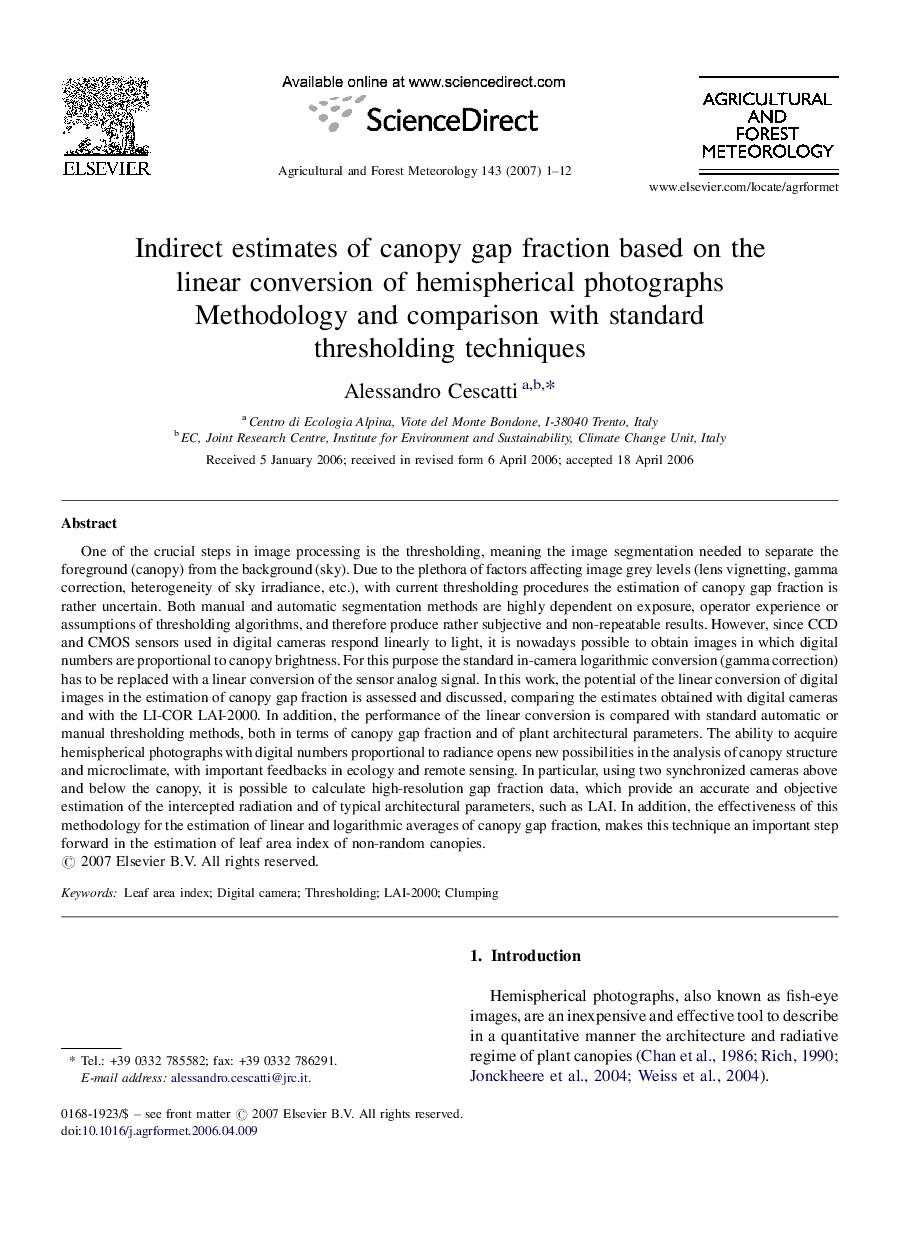| کد مقاله | کد نشریه | سال انتشار | مقاله انگلیسی | نسخه تمام متن |
|---|---|---|---|---|
| 82846 | 158421 | 2007 | 12 صفحه PDF | دانلود رایگان |

One of the crucial steps in image processing is the thresholding, meaning the image segmentation needed to separate the foreground (canopy) from the background (sky). Due to the plethora of factors affecting image grey levels (lens vignetting, gamma correction, heterogeneity of sky irradiance, etc.), with current thresholding procedures the estimation of canopy gap fraction is rather uncertain. Both manual and automatic segmentation methods are highly dependent on exposure, operator experience or assumptions of thresholding algorithms, and therefore produce rather subjective and non-repeatable results. However, since CCD and CMOS sensors used in digital cameras respond linearly to light, it is nowadays possible to obtain images in which digital numbers are proportional to canopy brightness. For this purpose the standard in-camera logarithmic conversion (gamma correction) has to be replaced with a linear conversion of the sensor analog signal. In this work, the potential of the linear conversion of digital images in the estimation of canopy gap fraction is assessed and discussed, comparing the estimates obtained with digital cameras and with the LI-COR LAI-2000. In addition, the performance of the linear conversion is compared with standard automatic or manual thresholding methods, both in terms of canopy gap fraction and of plant architectural parameters. The ability to acquire hemispherical photographs with digital numbers proportional to radiance opens new possibilities in the analysis of canopy structure and microclimate, with important feedbacks in ecology and remote sensing. In particular, using two synchronized cameras above and below the canopy, it is possible to calculate high-resolution gap fraction data, which provide an accurate and objective estimation of the intercepted radiation and of typical architectural parameters, such as LAI. In addition, the effectiveness of this methodology for the estimation of linear and logarithmic averages of canopy gap fraction, makes this technique an important step forward in the estimation of leaf area index of non-random canopies.
Journal: Agricultural and Forest Meteorology - Volume 143, Issues 1–2, 16 March 2007, Pages 1–12